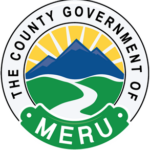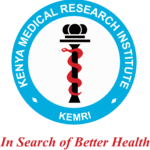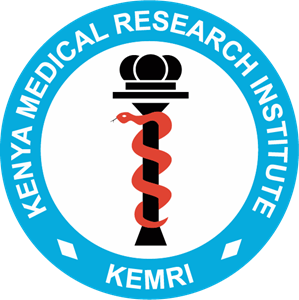
THE 1st MERU COUNTY SCIENTIFIC CONFERENCE ON KHAT (MIRAA)
27th to 28th October 2021

Introduction
Miraa (Catha Edulis) is a flowering evergreen tree that is internationally known as Khat; ‘qat’ in Yemen; ‘Jad’ or ‘chad’ in Ethiopia and Somalia; ‘Mairungi’ in Uganda and Rwanda among others. Its young tender twigs, leaves and shoots are consumed raw. It has numerous uses including but not limited to economic, medicinal, social and environmental value. Khat (miraa) is grown in selected regions of the world which include Kenya, Ethiopia, Yemen, the Saudi Peninsula and Madagascar. It was first identified in 1762 by a botanist called Forskal in Yemen; however, Ethiopia is the center of origin and the world’s largest producer with khat chewing beginning in the 15th century.
In Kenya, khat (miraa) grows naturally in many parts of the country but is cultivated in large quantities in Meru, Tharaka Nithi and Embu Counties. In Meru County, khat (miraa) has been grown since the early 19th century, predominantly in the Nyambene Hills, with an estimated 70,000 hectares of land under khat (miraa) cultivation in the region. This was estimated to bring a total of Kshs. 6.9 billion in export earnings in 2011.
Objectives
The main objective of the conference is to understand the impact of khat (miraa) on health, social and economic well-being using research evidence.
The specific objectives are as follows;
- To understand the chemical composition and health and nutritional benefits of khat (miraa)
- To discuss the impact of production and consumption of khat (miraa) on social well-being
- To explore on the challenges and opportunities in commercialization and market access for khat (miraa) and its products
Structure of the Conference
The Conference will comprise of two main segments:
- Plenary presentations on health, phytochemical, social and economic issues of khat (miraa), followed by moderated sessions on the same,
- Parallel exhibition and stakeholders’ panel sessions on the value addition and commercialization of khat (miraa).
Outcomes of the Conference
The expected outcome of the 1st Meru County Scientific and Health Conference on Khat (Miraa) 2021 will include:
- The Conference will consider acquiring a few useful lessons from a briefcase study of the success of the Yerba Mate tree, an indigenous tree just like Khat that was discovered in Paraguay, Brazil, and Argentina. The leaves from this tree produce the Yerba mate tea commonly drunk in social settings and family gatherings in Argentina. Due to its popularity, there has been value addition to the Yerba mate tea, with a wide range of flavour options being produced, many of which are mixed with other herbs such as chamomile or mint. As a result, the use of Yerba Mate has become a cornerstone of Argentine society and identity, and processors are working to expand exports globally.
- A report outlining the chemical composition of khat (miraa) and its health and nutritional benefits
- Proceedings on the impact of production and consumption of khat (miraa) on social well-being
- An account of the challenges and opportunities in commercialization and market access for khat (miraa) and its products
Outputs of the Conference
The workshop will generate the following outputs:
- Conference proceedings reports
- Conference communique
THE 1ST MERU COUNTY SCIENTIFIC CONFERENCE ON KHAT (MIRAA) 2021
Main Theme
Research evidence of the impact of Khat (Miraa) on Health, Social and Economic well-being
Sub-Themes
- Health: Chemical Composition of Khat (Miraa) and its Health and Nutritional Benefits
- Social: The Impact of Production and Consumption of Khat (Miraa) on Social Well-being
- Economic: Challenges and Opportunities in Commercialization and Market Access for Khat (Miraa) and its Products
Conference Dates and Venue
CONFERENCE DATES
27th to 28th October 2021
VENUE
University of Nairobi
PROPOSED TOPICS FOR PLENARY DISCUSSION
KEMRI will synthesis primary and secondary research findings with a view of re-packaging the outputs into evidence briefs to inform and influence plenary discussions and policy direction. In partnerships with other invited plenary speakers, infographics and short communication briefs which will inform and guide plenary discussions will be developed. Table 1 summaries the tentative
Table 1: Sources of data and information and outputs for the various thematic areas to be presented during the 1st Meru County Scientific and Health Conference on Khat (Miraa) 2021
| Broad Thematic | Source of Data & Information | Type of Output | Lead |
| Primary research of chemical composition of khat (miraa) | Evidence brief | KEMRI | |
| Primary research on health and nutritional benefits of khat on human health | Abstracts | ||
| Synthesis of secondary literature on mental health | |||
| Social Impact of khat (miraa) | Synthesis of secondary literature on effects of khat (miraa) production and consumption on family setups, demographics and social fabric. | Infographics | TBA |
| Economics of khat (miraa) | Secondary literature synthesis on the challenges and opportunities in commercialization and market access for khat (miraa) and its products | Short communication brief / viewpoints | TBA |
Policy Issues
The issues around khat (miraa) pose 2 policy issues.
Policy issue 1: The need for policy formulation options on the growing, consumption, and marketing of khat (miraa) in Kenya.
- What is the chemical composition of khat (miraa), since its phytochemistry depends on where it has grown?
Policy issue 2: The need for a policy implementation option.
In Kenya, khat (miraa) is one of the drugs which the society struggles to strike a balance between the perceived benefits of production vis-a-vis the perceived adverse effects of consuming the substance. To the producers, the khat (miraa) plant is treated as a cash crop just like tea, coffee or sugarcane. Unlike other drugs and substances such as alcohol and narcotics, for which there exists substantial literature, very little is known regarding policy-relevant information with respect to khat (miraa). The upcoming conference will seek to address the following questions.
- What are the practical experiences and best lessons from other countries that produce and export khat (miraa)?
- Secondly, what are the perceived benefits of the production of khat (miraa) vis-a-vis the perceived adverse effects of khat (miraa) consumption?
- What are the value-addition options that can make khat (miraa) commercially viable?
Prepared by:
KENYA MEDICAL RESEARCH INSTITUTE (KEMRI)
P.O. Box 54840 – 00200, GPO,
Nairobi
Email: gro.irmek@eettimmochsak
